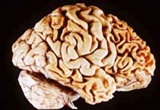|
From rxpgnews.com Neurosciences
Manganese is a metal used in welding, battery making and in other industrial settings. In Canada, it replaced lead as a gasoline additive. Manganese, in the form of MMT, is approved in the United States as a gasoline additive but is not in use. The symptoms of �manganism� include behavioral and memory disturbances as well as Parkinson�s-like symptoms. Tremors occur with movement as opposed to the resting tremors typical of Parkinson�s disease. �These findings may provide an explanation for some of the differences between manganism and idiopathic Parkinson�s disease, as well as why patients with manganese-induced neurological symptoms do not seem to respond to traditional Parkinson�s therapies,� said the study�s lead author, Tom�s R. Guilarte, PhD, a professor in the Department of Environmental Health Sciences at the Bloomberg School of Public Health. For the study, researchers observed a group of animals that were given incremental levels of manganese. The animals were monitored for behavioral changes and Positron Emission Tomography (PET) was used to assess various markers of dopamine neurons in the brain. According to the study, in addition to decreased in vivo dopamine release, manganese exposure produced subtle deficits in behavior and fine motor function. �More work is needed to understand the relationship between the changes in behavior and the alterations in the dopamine system,� explained Jay S. Schneider, professor of pathology, anatomy and cell biology at Thomas Jefferson University and co-author of the study. �There are other aspects of manganese neurotoxicity that this on-going study is examining that are likely to change the way that we view the risk of manganese exposure today,� said Guilarte. All rights reserved by www.rxpgnews.com |
